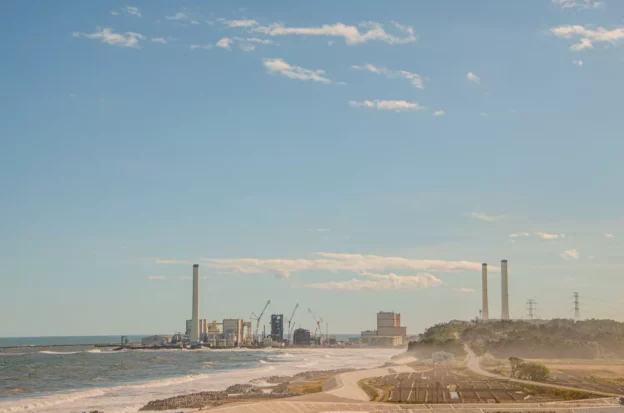On March 15, Japan decided to halt the discharge of wastewater from the Fukushima nuclear power plant as a precautionary measure following an earthquake, according to the company that manages the facility.
The Japan Meteorological Agency reported that an earthquake of magnitude 5.8 struck the Fukushima region, located in the northeast of the country, where the nuclear power plant devastated by an earthquake and tsunami in 2011 is located.
The tremor had its epicenter in the ocean off the coast of Fukushima Prefecture, at a depth of approximately 50 km below the seabed.
On the Japanese scale, which focuses on measuring surface effects and areas impacted rather than the magnitude of the earthquake, this event reached a level 5 higher in Fukushima Prefecture, with 7 being the maximum on that scale.
Stopping Fukushima wastewater discharge was done as a precaution
TEPCO, the plant’s operator, assured that the earthquake did not cause any irregularities in the facilities in charge of dilution and discharge of treated water. However, they opted to halt operations as a precautionary measure.
Likewise, Japan’s nuclear regulatory body confirmed that no anomalies were observed at the Fukushima Daiichi nuclear power plant after the earthquake.
Since August, TEPCO had begun the process of release of wastewater, equivalent to 540 Olympic-size swimming pools, collected at the plant after the 2011 disaster equivalent to 540 Olympic swimming pools, collected at the plant after the 2011 disaster and subjected to treatment to remove radioactive elements.
Although the UN has endorsed the safety of this plan, both Russia and China have expressed their opposition, arguing that the discharge pollutes the environment.
Notably, the temporary suspension of wastewater discharge from Fukushima following the recent earthquake underscores the region’s continued vulnerability to seismic events and the importance of maintaining strict precautionary measures. This incident highlights the need for constant vigilance and rapid response systems to protect both the environment and the public from potential adverse consequences arising from the management of the nuclear plant.
Don’t miss any of our posts and follow us on social media!
Inspenet.com YouTube LinkedIn Facebook Instagram
Source: dw.com
Photo: shutterstock

